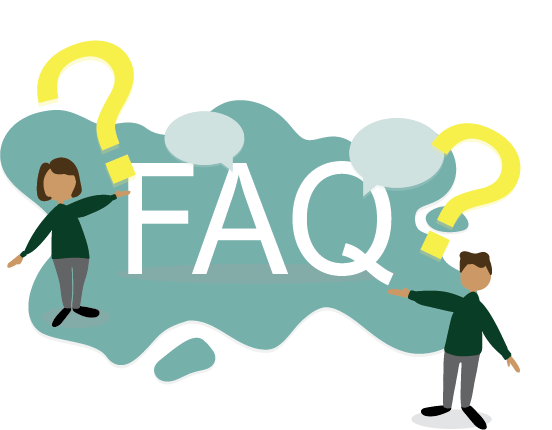08.02.2024
 Over the past few years, the ALRC used pioneering data collection and analysis to scrutinise corporations and financial services legislation. Using legislative data, the ALRC was able to show just how complex corporations and financial services legislation is. The ALRC also used that data when developing reforms.
Over the past few years, the ALRC used pioneering data collection and analysis to scrutinise corporations and financial services legislation. Using legislative data, the ALRC was able to show just how complex corporations and financial services legislation is. The ALRC also used that data when developing reforms.
This article aims to answer some of the (hypothetically) frequently asked questions about the Legislative Data Framework recommended by the ALRC (Recommendation 58). The Legislative Data Framework would be a publicly available data framework for monitoring the development of corporations and financial services legislation. As outlined below, it would be a useful tool for several different users of the legislation.
This is the sixth (and final) in a series of short pieces following the release of the ALRC’s Final Report relating to the legislative framework for corporations and financial services regulation.
 What is legislative data?
What is legislative data?
By treating legislation as data (or a dataset), a wide range of data points can be generated. These include, for example, page length, word length, the number of chapters, parts, or sections, the number of defined terms, and the frequency with which defined terms are used. This data can then be analysed to generate novel insights into the law, as the ALRC has done when investigating the complexity of corporations and financial services legislation. The use of legislative data underscores the ALRC’s commitment to evidence-based law reform.
The ALRC’s DataHub contains the data sets used by the ALRC and several illustrations of how legislative data can be used.
What is the Legislative Data Framework?

The Legislative Data Framework would provide a publicly available resource for users of corporations and financial services legislation.
The Legislative Data Framework has three main purposes:
- to provide resources that help stakeholders navigate and understand the legislation;
- to help government administer and reform the legislation; and
- to allow legislation to be monitored over time and for stakeholders to hold government accountable for the legislation’s development over time.
Recommendation 58 sets out the types of legislative data that the ALRC recommends that the framework should track. This includes, for example:
- How many pieces of principal primary and delegated legislation are currently in force?
- How many are enacted each year?
- How long are they (how many pages and words)?
- How many powers to make regulations (and other legislative instruments) are in force?
- How many of those powers are enacted each year?
- How many times have those powers been exercised?
- How many notional amendments are in force and enacted annually?
- Which pieces of legislation do those notional amendments affect?
For more information on the legislative data framework, see Chapter 10 of the Final Report.
 How has the ALRC used legislative data in this Inquiry?
How has the ALRC used legislative data in this Inquiry?
The ALRC has used computational methods to analyse over 53GB of textual data. This is the equivalent of over 10 million pages of documents, including: more than 13,000 Acts, 89,000 legislative instruments, more than 35,000 legislation compilations, 101,000 court judgments, and 200 regulatory guides.
The ALRC wrote a number of computer programs using ‘R’ programming language to ‘scrape’ the HTML of legislation and metadata legislation from the Federal Register of Legislation website. This data was then computationally analysed to help the ALRC measure and understand the breadth of the legislative complexity in the financial services legislative framework.
For more information on the methodology used in this Inquiry, see Interim Report A.
How does the ALRC see the Legislative Data Framework being used?
The Terms of Reference for the Inquiry asked the ALRC to consider ‘how legislative complexity can be appropriately managed over time’. The Legislative Data Framework would help do this.
In particular, it would be used to:
- support government and regulators to make it easier to produce higher quality legislation, and to perform their regulatory stewardship roles; and
- promote accountability by providing the basis for accountability dashboards that track changes in the volume of legislation, regulatory guidance, notional amendments, unused legislative powers, offences, and other penalties.
The ALRC suggests that the Legislative Data Framework should be used alongside a legislative complexity framework. Currently, there is very little research into legislative complexity in Australia. This legislative complexity framework would seek to fill that gap.
The legislative complexity framework would provide a way to track how particular legislative features make legislation more or less complex over time. For more information on the legislative complexity framework, see Chapter 10 of the Final Report.
 What is currently being done with data and legislation?
What is currently being done with data and legislation?
Legislative data is being used for more than just corporations and financial services legislation.
The Australian Government recently completed a Review of the Migration System. In the Review, the legislative and policy complexity of migration law was highlighted through the use of data and visualisations.
Similarly, Associate Professor Crawford and others used data collected from the Federal Register of Legislation to measure complexity across several federal Acts.
The NSW Government Legislation Twin uses data so that stakeholders can gain a better understanding of the interconnections between NSW legislation, other legal instruments, and government agencies and ministers. 
How resource-intensive would a Legislative Data Framework be?
The majority of the ALRC’s data collection and publication was performed by the equivalent of less than one full-time staff member, with modest computing resources. The ALRC’s experience suggests that the Legislative Data Framework would not require considerable resources.
 What could the legislative data framework be used for in the future?
What could the legislative data framework be used for in the future?
There are many potential future uses for the Legislative Data Framework. The ALRC has discussed how the framework could facilitate the development of regulatory technology (commonly referred to as ‘RegTech’) and other technological solutions to aid compliance.
In the future, the data framework could be extended to obtain more granular data, which would provide specific insights on particular aspects of legislation. For an example of how such granular data could be used, see Chapter 3 of Interim Report A.
The data framework could also be extended to cover all Commonwealth legislation. This would have benefits for everyone who uses Commonwealth legislation, as well as those who are involved in legislative scrutiny and maintenance.
